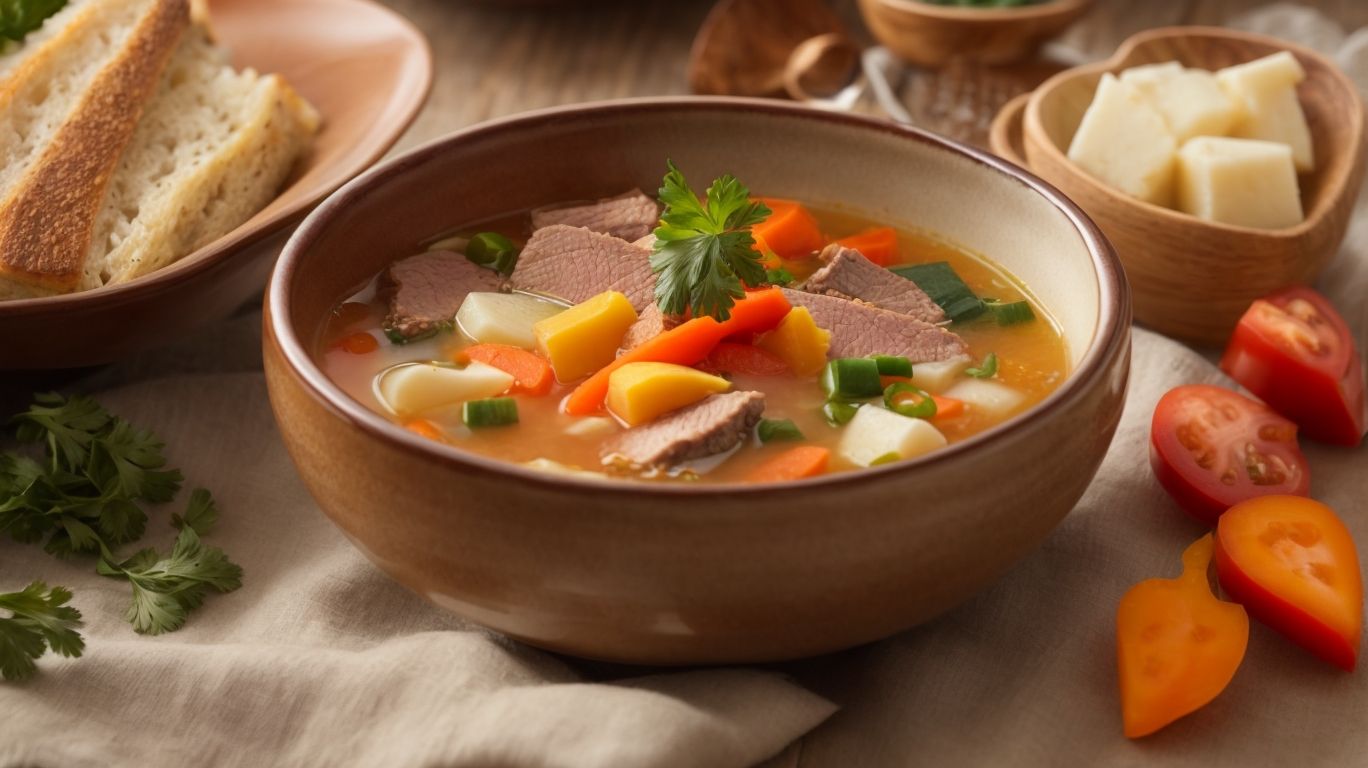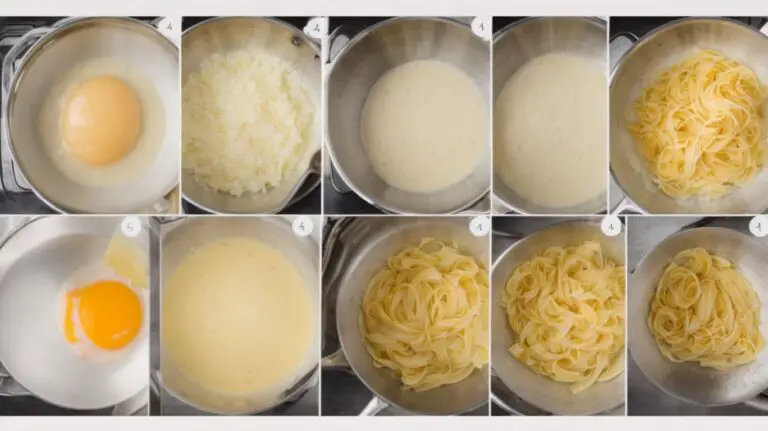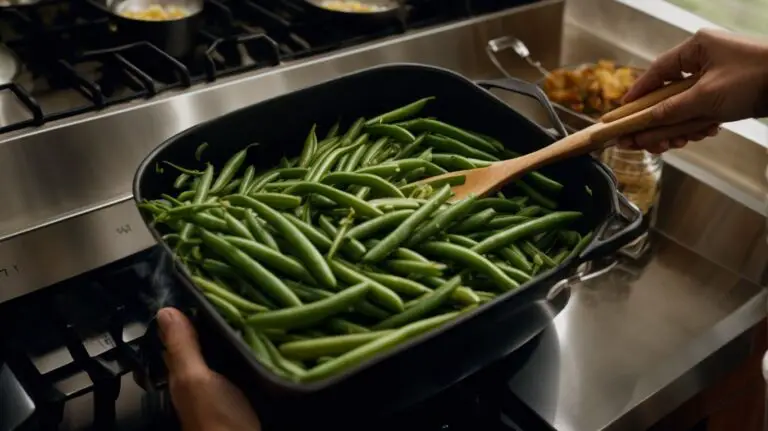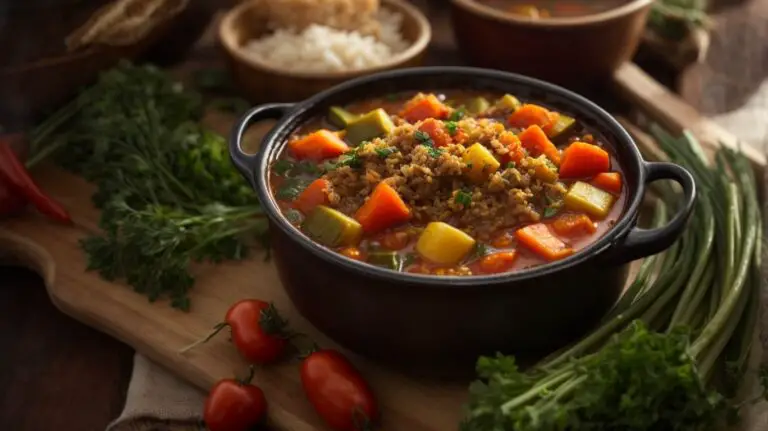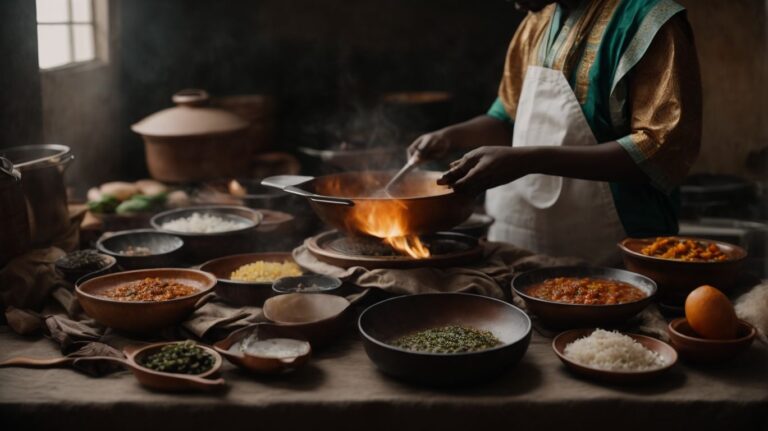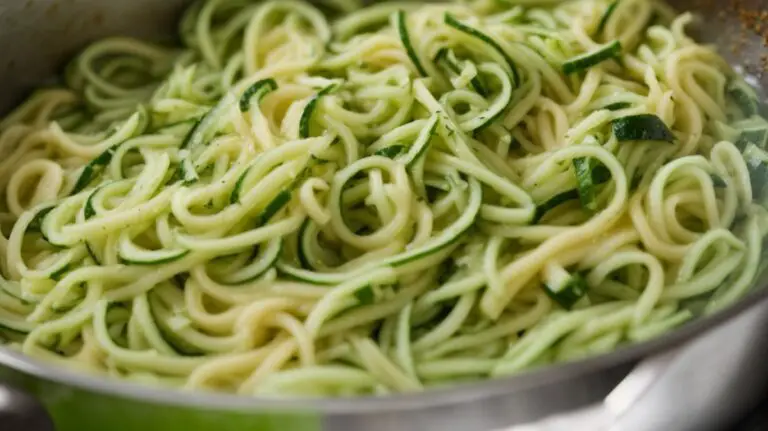How to Cook Oha Soup With?
Are you looking to explore the rich and flavorful world of African cuisine? Look no further than Oha Soup!
In this article, we will delve into what Oha Soup is, the key ingredients needed, its origin, and most importantly, how to prepare and cook this delicious dish.
From selecting and cleaning the Oha leaves to enhancing the flavor of the soup, we will provide you with all the tips and tricks you need to create a mouthwatering Oha Soup. Let’s get cooking!
Key Takeaways:
What is Oha Soup?
Oha Soup is a traditional Nigerian dish, specifically popular in the South Eastern part of Nigeria, made with fresh Oha leaves.
Oha Soup stands out due to the distinct taste that the tender Oha leaves impart, giving the soup its unique flavor profile. In Nigeria, Oha Soup is deeply intertwined with the culture and traditions of the Igbo people, where it holds a special place in celebratory meals and gatherings.
The traditional preparation of Oha Soup involves meticulously washing and shredding the delicate Oha leaves, which are then combined with assorted meats, crayfish, stockfish, and palm oil to create a rich and flavorful broth.
What Are the Ingredients of Oha Soup?
The ingredients of Oha Soup include Oha leaves, Cocoyam, Ogiri, Palm oil, Stockfish, Uziza leaves, and Meat stock, creating a flavorful and aromatic dish.
Each ingredient in Oha Soup plays a crucial role in shaping the dish’s rich and distinctive flavor profile. Oha leaves, also known as ora leaves, are the heart of this traditional Igbo soup, providing a unique taste and aroma. Cocoyam, used as a thickening agent, gives the soup its characteristic silky texture.
While Ogiri, a fermented condiment, adds depth and complexity to the flavor, Palm oil contributes a rich and vibrant hue to the dish.
Stockfish, a staple in Nigerian cuisine, infuses the soup with a smoky essence and a satisfying chewiness.
Uziza leaves, with their peppery undertones, add a hint of spice, enhancing the overall taste experience.
What is the Origin of Oha Soup?
Oha Soup originates from Nigeria, particularly the South Eastern part of the country, where it holds a special place in the culinary traditions.
Rooted in the Igbo culture, Oha Soup is more than just a dish; it’s a reflection of history, heritage, and community ties. The name ‘Oha’ itself signifies a type of leaf used in the preparation, showcasing the deep connection between nature and cuisine in the region. Over the years, this flavorful soup has become a staple in Nigerian households, not just for its taste but also for its cultural significance. Its rich blend of ingredients and traditional cooking methods highlight the ingenuity and creativity of the South Eastern culinary heritage.
How to Prepare Oha Leaves for Cooking?
Preparing Oha Leaves for cooking involves selecting fresh leaves from Nigeria, ensuring they are clean and free from impurities.
Step 1: Selecting and Cleaning the Oha Leaves
To start, carefully select fresh Oha leaves sourced from Nigeria and meticulously clean them to remove any dirt or debris.
Choosing high-quality fresh Oha leaves is essential for maintaining the authentic taste and nutritional value in traditional Nigerian dishes. Oha leaves add a unique flavor profile with their slightly bitter taste and aromatic scent, enhancing the overall dish.
When sourcing from Nigeria, you ensure that you’re using the original variety, rich in nutrients and flavor. Proper cleaning is crucial to preserving the leaves’ integrity and avoiding any unwanted grittiness in your final dish.
Step 2: Drying the Oha Leaves
After cleaning, proceed to dry the Oha leaves thoroughly, ensuring they are free from moisture before further preparation for cooking.
Drying Oha leaves is a critical step in the preservation process, directly impacting the overall flavor and quality of the dish. Properly dried leaves not only intensify the aroma but also help in retaining their nutritional value.
One of the most common methods used for drying Oha leaves is air-drying. This traditional Nigerian technique involves spreading the leaves evenly in a well-ventilated area away from direct sunlight. The slow drying process allows the leaves to gradually lose moisture without compromising their taste.
Moisture removal is key to preventing the growth of mold and bacteria while keeping the distinct taste intact.
Step 3: Shredding the Oha Leaves
Once dried, carefully shred the Oha leaves into fine pieces, maintaining their integrity and texture for the final dish.
Shredding the Oha leaves properly is a crucial step in Nigerian cuisine, as it directly impacts the flavor and presentation of the dish. The size and consistency of the shreds play a significant role in the overall texture and mouthfeel of the meal.
Traditionally, Oha leaves are shredded into thin strips to allow them to blend seamlessly into soups and stews, releasing their unique taste and aroma as they cook. The attention to detail in shredding reflects the respect for ingredients and the dedication to creating an authentic culinary experience.
How to Cook Oha Soup?
Cooking Oha Soup involves a process that includes preparing the meat and stock, adding various ingredients, incorporating the Oha leaves, and finally, serving the flavorful dish.
Step 1: Preparing the Meat and Stock
Commence by preparing the meat and stock for Oha Soup, a crucial step in enhancing the flavor and richness of this traditional Nigerian dish.
To start, cut tender pieces of beef or goat meat into sizes suitable for stewing, ensuring they are well-trimmed. Next, in a large pot, combine the meat with water, sliced onions, crushed garlic, and a pinch of salt for seasoning. Simmer gently until the meat is tender and flavors infuse the broth.
Meanwhile, prepare the stock by boiling a mix of assorted meat parts like cow tripe, beef skin, and shaki (tripe) in a separate pot. This creates a robust base for the soup, with each component adding its unique flavor.
Step 2: Adding Other Ingredients
Next, add a selection of essential ingredients to the pot, including Ogiri, Uziza leaves, and other traditional components that contribute to the unique flavor profile of Oha Soup.
Along with these key elements, Oha Soup traditionally incorporates a variety of other ingredients to enhance its rich taste. These may include protein-rich meats like goat meat or chicken, fermented locust beans, cocoyam paste for thickening, crayfish for added depth of flavor, palm oil for richness and color, and stockfish or dry fish for a savory depth. The use of indigenous seasoning like Cameroon pepper and traditional Nigerian spices like uziza seeds adds a warming and aromatic twist.
Step 3: Adding the Oha Leaves
Incorporate the shredded Oha leaves into the pot, allowing them to infuse their distinct flavor and aroma into the simmering soup, a critical step in the preparation process.
In Nigerian cuisine, adding Oha leaves to the soup is not just about flavor, it’s a tribute to tradition and culture. These vibrant green leaves bring a unique earthy taste that elevates the overall experience of the dish. Oha leaves are known for their ability to release a delightful scent that fills the kitchen, signaling a delicious meal in the making. The texture they lend to the soup adds a layer of complexity, making each mouthful a delightful journey through the rich flavors of Nigeria.
Step 4: Cooking and Serving the Oha Soup
Allow the Oha Soup to simmer and cook to perfection before serving this traditional Nigerian delicacy to enjoy its rich flavors and nutritional benefits.
As the Oha Soup slowly simmers, the aroma fills the kitchen, creating an inviting atmosphere. The final step involves garnishing the soup with freshly chopped Oha leaves to enhance its vibrant green color and add a fresh, earthy taste. Traditionally, this dish is often served warm in clay pots or traditional wooden bowls, emphasizing the cultural significance of communal dining and sharing food in Nigerian traditions.
Tips and Tricks for Cooking Oha Soup
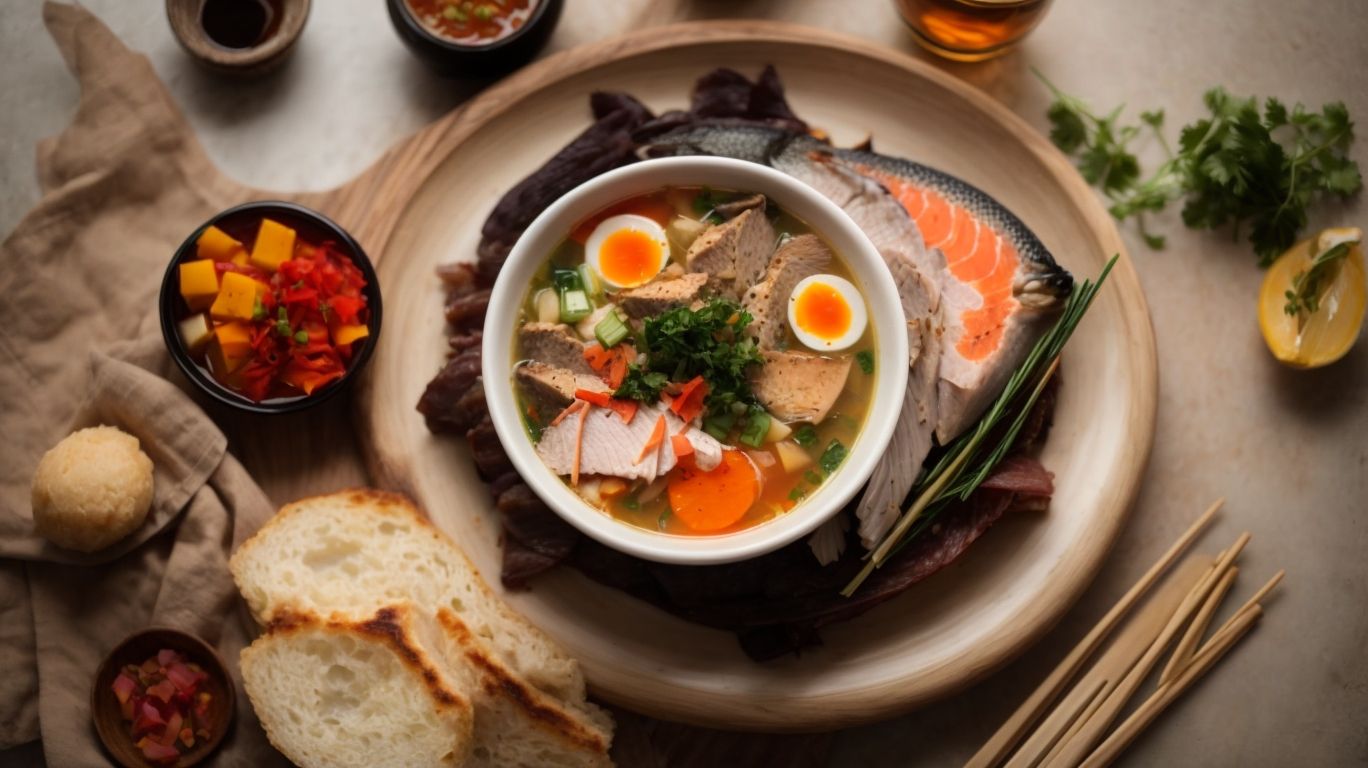
Credits: Poormet.Com – William Baker
Enhancing the flavor of Oha Soup can be achieved through the careful selection of ingredients, using traditional Nigerian components to elevate the taste profile.
How to Enhance the Flavor of Oha Soup?
To enhance the flavor of Oha Soup, consider incorporating aromatic ingredients and spices native to Nigeria, such as Ogiri and Uziza leaves, to create a robust and authentic taste.
Adding a touch of freshness and earthiness, the bitter Uziza leaves contribute a unique peppery flavor that elevates the dish’s complexity.
Using locally sourced crayfish and Stockfish provides a rich umami base, while the inclusion of palm oil imparts a characteristic depth and lusciousness to the soup.
Enhancing the spices further, the incorporation of dried Dawa seeds and the pungent scent of Ehuru seeds add a delightful warmth and dimension to each spoonful.
Don’t forget the key hints of Nigerian Maggi cubes or iru (fermented locust beans) for that signature savory note that ties all the flavors together in perfect harmony.”
What Other Ingredients Can You Add to Oha Soup?
Plus the traditional ingredients, consider incorporating variations such as dried shrimp, ground crayfish, or stockfish to add complexity and depth to your Oha Soup.
For those who enjoy a rich umami flavor, dried shrimp can provide a savory kick while also contributing a unique texture. Ground crayfish, on the other hand, brings a nutty undertone that complements the earthy taste of the Oha leaves. Meanwhile, the inclusion of stockfish not only infuses a robust seafood essence but also imparts a delightful smokiness to the dish.
Experimenting with these modern twists can elevate the traditional Oha Soup recipe, adding layers of taste and aroma that showcase the diversity of Nigerian culinary traditions.
How to Store and Reheat Oha Soup?
When storing Oha Soup, ensure it is kept in airtight containers in the refrigerator.
It is crucial to store the soup properly to prevent it from spoiling or losing its flavor. Nigerian storage practices often include using airtight containers to maintain freshness.
Try to separate any leftovers into smaller portions before refrigerating to make reheating more manageable. When reheating, opt for gentle heat methods like stove-top or microwave reheating, stirring occasionally to maintain consistency.
Frequently Asked Questions
How to Cook Oha Soup With?
Oha soup is a traditional Nigerian dish made with the leaves of the Ora tree. Here are some frequently asked questions about how to cook Oha soup with.
What are the ingredients needed to cook Oha soup?
The main ingredients for Oha soup are Ora leaves, meat (usually beef or goat), dried fish, stockfish, crayfish, palm oil, and assorted spices. You can also add other vegetables and protein to your liking.
Can I use frozen Ora leaves to cook Oha soup?
Yes, you can use frozen Ora leaves for convenience. However, fresh leaves will give a more authentic and flavorful taste to your Oha soup.
How do I prepare the Ora leaves for cooking?
To prepare the Ora leaves, wash them thoroughly and shred them into small pieces. You can also use a food processor for a finer texture.
What type of meat is best for Oha soup?
Beef and goat meat are the most commonly used in Oha soup. You can also use chicken, fish, or any other protein of your choice.
Is Oha soup difficult to make?
Not at all! With the right ingredients and instructions, anyone can make delicious Oha soup. It may take some practice to perfect the dish, but it is definitely worth the effort.

